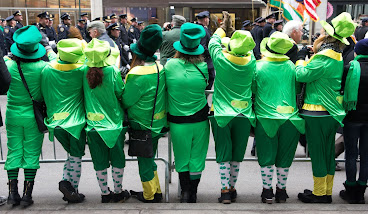Irish traditions surrounding Saint Patrick's Day
A number of Irish-specific customs are observed on Saint Patrick's Day, a festival that is observed both in Ireland and around the world. Some of the most popular Saint Patrick's Day customs are listed below:
1. Wearing green is customary on Saint Patrick's Day and is frequently regarded as a sign of Irish pride and history. The origin of this custom can be traced back to the 17th century, when the color green came to represent the Irish independence cause.
2. Parades: In Ireland and in places with sizable Irish populations, such as New York and Boston, Saint Patrick's Day parades are a well-liked tradition. These parades provide individuals a chance to get together to celebrate their Irish history and frequently include floats, music, and dancers.
3. Shamrocks: A popular Irish symbol, shamrocks are frequently connected to Saint Patrick's Day. Shamrocks are frequently worn or displayed today as a symbol of Irish identity since it is thought that Saint Patrick used them to explain the Holy Trinity to the Irish people.
4. Traditional Irish music and dance: Traditional Irish music and dance are frequently performed on Saint Patrick's Day in pubs, community centers, and other locations. This music and dance honors Irish heritage and culture while giving people a reason to socialize and take part in the celebrations.
5. Typical Irish fare and beverages: Corned beef and cabbage, Irish soda bread, and, of course, Guinness and other Irish brews are all traditional Irish fare and beverages that are enjoyed on Saint Patrick's Day. These dishes offer a means to honor Irish hospitality and culture, and they are frequently connected with Saint Patrick's Day.
In conclusion, there are several distinctively Irish customs that are observed on Saint Patrick's Day, including donning green, watching parades, putting up shamrocks, appreciating traditional Irish music and dancing, and indulging in traditional Irish cuisine and drink. These customs are still honored today in Ireland and all around the world, contributing to the promotion and preservation of Irish culture and heritage.








Comments
Post a Comment